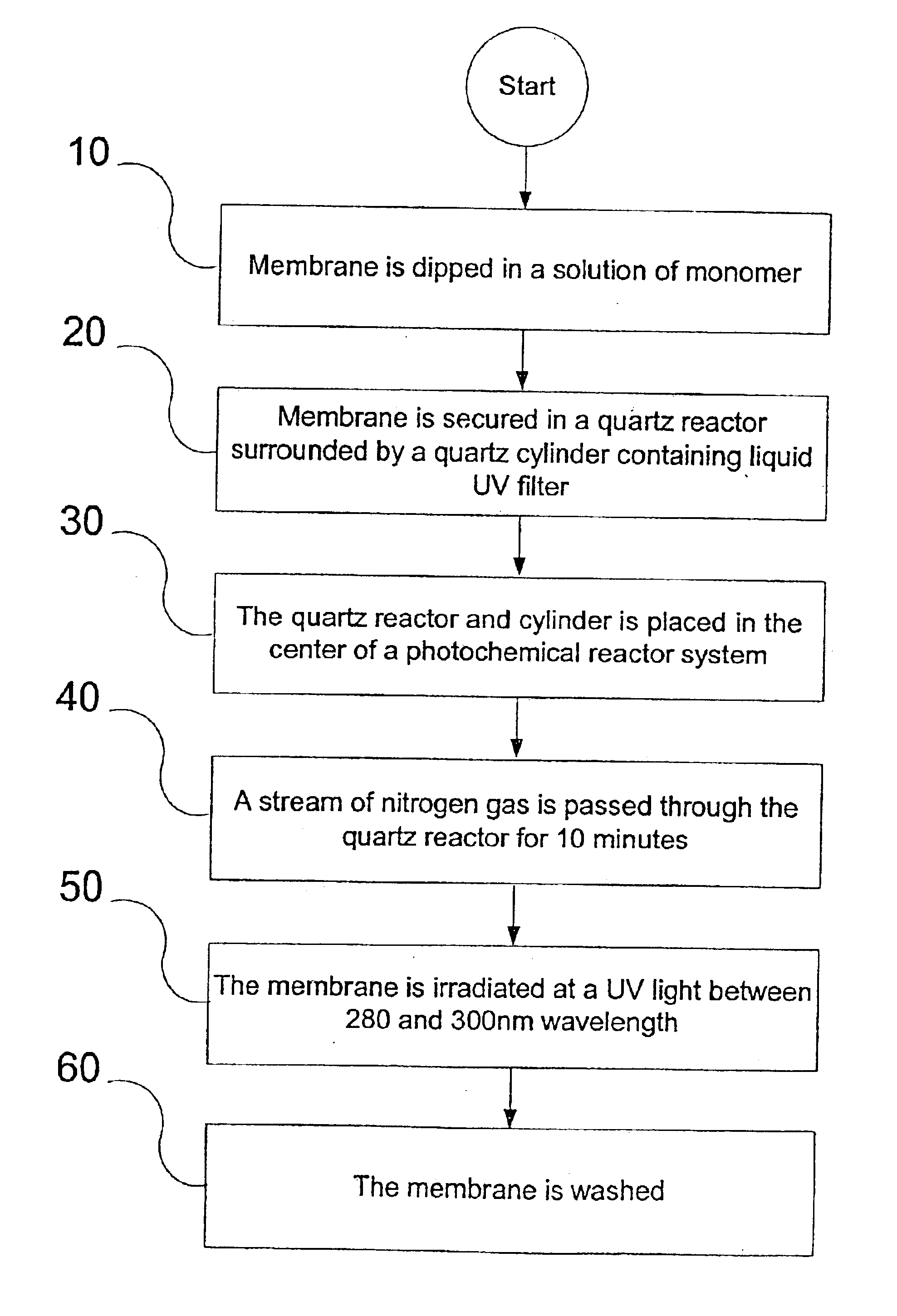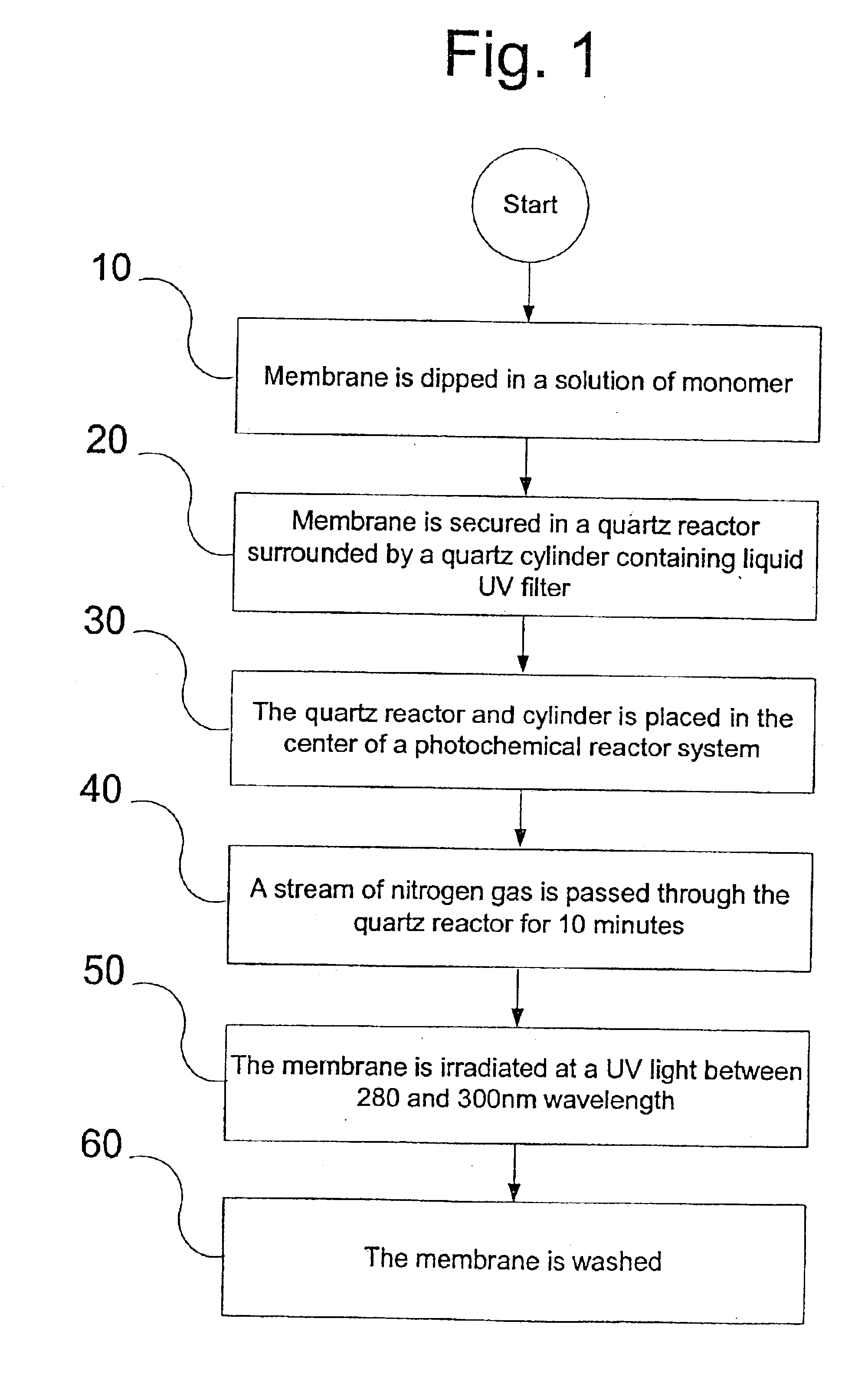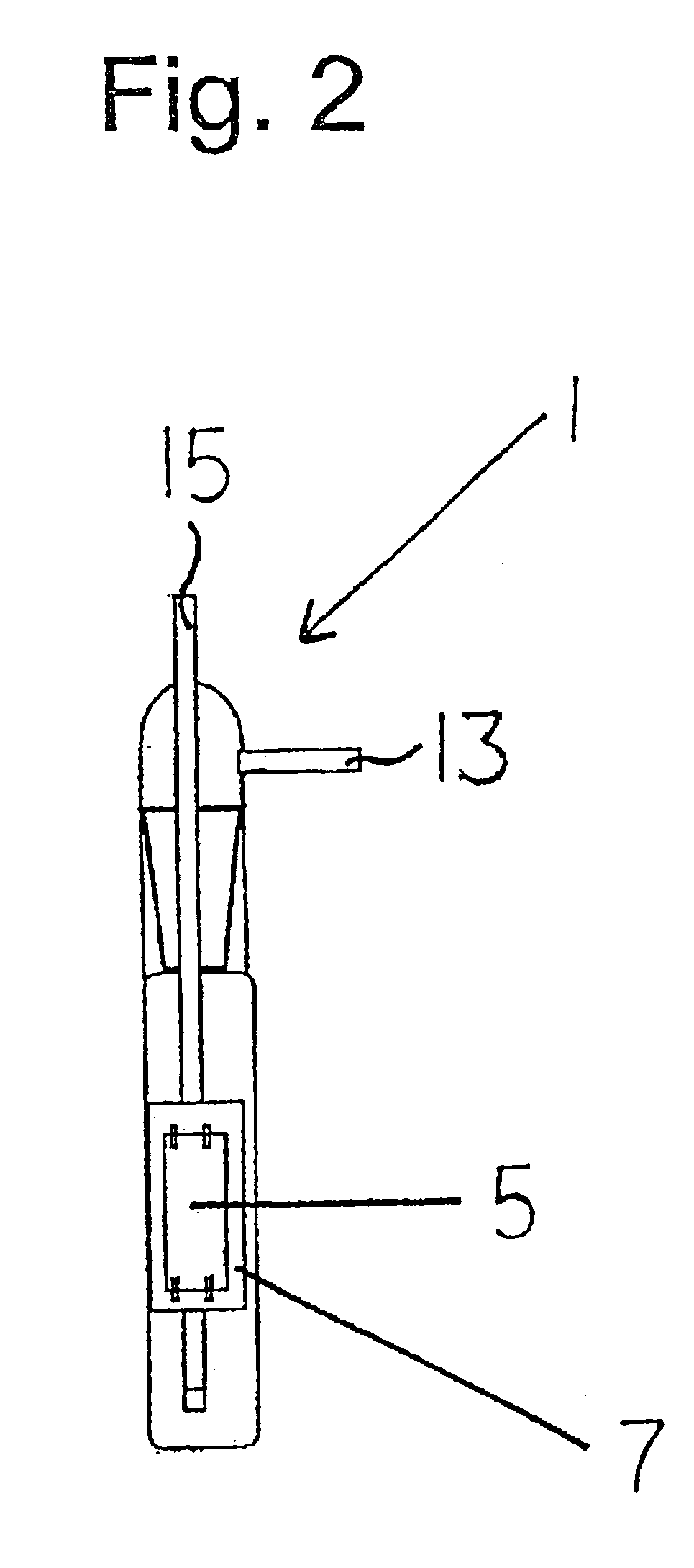UV-assisted grafting of PES and PSF membranes
a technology of uv-assisted grafting and membrane, applied in the field of ultrafiltration membrane, can solve the problems of reducing productivity, reducing membrane permeability, and reducing flux, and achieves the effects of reducing the number of uv-assisted grafting, and reducing the permeability of membranes
- Summary
- Abstract
- Description
- Claims
- Application Information
AI Technical Summary
Benefits of technology
Problems solved by technology
Method used
Image
Examples
example 1
Various membranes were provided and compared for permeability, solute flux, and flux recovery. These membranes were either modified or unmodified. Unmodified regenerated cellulose (“RC”) and PES membranes were provided as samples 1 and 2 respectively. PES was in other cases modified with 254 nm and 300 nm wavelength of UV light and was designated samples 3 and 4 respectively. PES was also modified with 300 nm UV light combined with two different types of light filters such as liquid benzene and a film of aromatic polyester, which was designated samples 5 and 6 respectively.
A 6×5 cm swatch of membrane, sufficient for protein filtration, was first cleaned by sonicating 3 times at room temperature in deionized water for 1 minute in order to remove the membrane wetting agent glycerol. A 5% by weight solution of NVP was prepared on a weight basis in deionized water. The membrane was then dipped in the NVP solution for 30 minutes with stirring. The membrane was then secured onto a square ...
example 2
A 50 kDa Omega PES membrane from Pall corp, a 50 kDa Polysulfone (“PSF”) GR51 PP membrane from Danish Separations Systems, and a 50 kDa regenerated cellulose membrane from Pall Filtron were provided. They were dipped in monomer solutions of 5% by weight NVP, AAG, and AAP. Only UV lamps that emit their maximum frequency at 300 nm were used to irradiate. The degree of grafting was compared. Degree of grafting (“DG”) equals the ratio of the peak height of the amide I carbonyl stretch in the monomer molecule to that of the benzene ring carbon-carbon double bond stretch. For the PES membrane, optimal grafting conditions with the three different monomers was at the lowest irradiation energy. PES is much more sensitive than PSf toward UV radiation, and is preferred, but both are acceptable for use.
example 3
A 50 kDa PES membrane was provided. Dip modification was with 5 wt % NVP for different times (hence different irradiation energies) with the listed conditions. Two filters, benzene liquid and aromatic polyester film, were used with 300 nm UV light. A regenerated cellulose membrane was used as the control surface. A solution of 0.1 wt % BSA in 10 mM PBS at pH=7.4 and 22° C. was filtered according to a constant volume diafiltration protocol.
FIG. 5 shows a graph plotting protein solution permeability as a function of irradiation energy exposure. The black bars represent the pure buffer permeability and the grey bars represent the protein solution permeability. Permeability was optimal with a benzene filter and irradiation at 300 nm wavelength. Permeability, along with solute flux and retention were optimal at lower irradiation energies.
PUM
| Property | Measurement | Unit |
|---|---|---|
| wavelength | aaaaa | aaaaa |
| wavelength | aaaaa | aaaaa |
| wavelength range | aaaaa | aaaaa |
Abstract
Description
Claims
Application Information
 Login to View More
Login to View More - R&D
- Intellectual Property
- Life Sciences
- Materials
- Tech Scout
- Unparalleled Data Quality
- Higher Quality Content
- 60% Fewer Hallucinations
Browse by: Latest US Patents, China's latest patents, Technical Efficacy Thesaurus, Application Domain, Technology Topic, Popular Technical Reports.
© 2025 PatSnap. All rights reserved.Legal|Privacy policy|Modern Slavery Act Transparency Statement|Sitemap|About US| Contact US: help@patsnap.com



